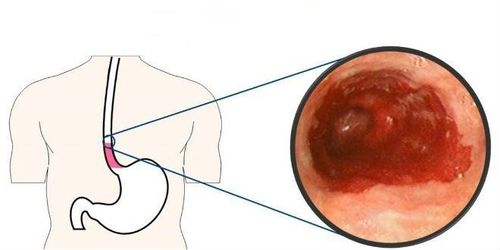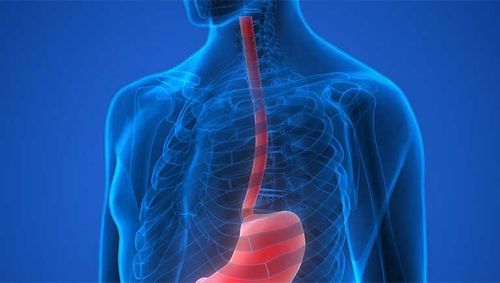This is an automatically translated article.
Cardiac spasm is a disease that seriously affects the quality of life of patients. To treat achalasia, patients can use medication, surgery or interventional balloon dilation. In particular, the method of esophageal dilation by air balloon is being widely applied today.
1. What is achalasia?
Cardiac spasm is a primary motility disorder of the esophagus, characterized by inadequate relaxation of the lower esophageal sphincter, inadequate relaxation, and absence of esophageal motility. People between the ages of 30 and 40 often have heart spasms and the prevalence is equal in both sexes.Cardiac spasm often progresses over a long period of time with the most common symptom being choking (both liquid and solid foods). Other symptoms of the disease include vomiting, chest pain, reflux, weight loss, food aspiration, aspiration pneumonia,...
Cardiac spasm can cause dangerous complications such as:
Respiratory complications Respiratory: Recurrent pneumonia, lung abscess,...; Esophagitis, which can lead to narrowing of the esophagus; Stomach cancer .

Người bị co thắt tâm vị thường xuất hiện triệu chứng trào ngược
2. Details of the method of balloon dilation to treat cardiac spasms
To treat cardiac spasms, the doctor may prescribe the following methods:
2.1 Medical treatment Using calcium channel blockers and nitrates: Effective in 10% of cases of patients with cardiac spasm, indicated for elderly patients, unable to inflate balloons or surgery; Botulinum toxin pump: Injected into the muscular layer of the oesophagus by esophagoscopy. This method is effective in 30% of cases of cardiac spasm and the effect can last for about 1 year; Esophageal dilation: Dilation of the esophagogastric region with an inflatable balloon is a method of using an air balloon with a pressure gauge to put it into the esophagus through the endoscope and then inflate the balloon to maximize muscle relaxation. Lower esophageal spasm, tearing the sphincter causing loss of spasm effect but keeping the mucosal layer intact. After balloon balloon dilation, perform an esophagogram with water-soluble contrast to confirm that there is no esophageal perforation. This method has a success rate of 70-80% but there is a risk of complications of esophageal perforation (rate 5%), esophageal reflux (25%) and 50% of patients need more than 1 balloon balloon dilation. . If air balloon dilation fails, surgery is indicated; 2.2 Surgical treatment Esophageal sphincter, Heller muscle resection.
2.3 Purpose of balloon dilatation The purpose of balloon dilatation to treat cardiac spasm is to tear the sphincter muscles of the lower esophageal sphincter. The most commonly used balloon is the Rigiflex Boston, choose from 3 diameters of 30, 35 and 40mm. A 30mm balloon is often used for first time dilation patients. Patients with recurrent achalasia may have dilation with larger balloons.

Nong bóng hơi giúp xé rách các lớp cơ vòng của cơ thắt thực quản dưới
2.4 Indications/Contraindications Indications
Patients with primary cardiac spasm.
Contraindications
Patients with achalasia secondary to or without cancer exclusion; Diaphragmatic hernia accompanied by cardiac spasm; Fungal esophagitis; Having a serious medical condition such as respiratory failure, myocardial infarction 2.5 Preparing to inflate the balloon Personnel: Doctor and assistant; Technical means: esophagogastroduodenal endoscope, balloon dilatation tube 30-35mm in diameter, 10cm long; manometer, lead wire; fluorescent screen monitor; Patients: Tests are performed and the purpose of surgery is explained, the process is performed, and the risk of complications; fasting for 24 hours before dilation (can be fed intravenously), if the stomach is dilated, there is a lot of food stagnation, it may be necessary to put a tube to suck the food out; Medical records: Prepare according to prescribed procedures. 2.6 Perform air balloon dilation The patient is given intravenous or endotracheal anesthesia if the disease is severe and has many comorbidities; Anesthesia with anesthetic spray to numb the throat; Patient position: Lying on the left side; Perform endoscopic evaluation of the esophagus - stomach; Place the endoscope in the antrum, through the biopsy channel, the lead is inserted into the stomach cavity; Unplug the scope and leave the lead; Insert the balloon into the oesophagus - cardia, monitor on the fluorescein screen, determine that the balloon is in the correct position; Inflate a little to see the constricted area; Inflate until the balloon waist position seen on the fluorescent screen is completely erased. The balloon inflation pressure is about 5PSI; Endoscopy evaluates the effectiveness of dilation and abdominal X-ray to detect early complications of esophageal perforation.

Nội soi để đánh giá hiệu quả sau khi nong bóng hơi
2.7 Follow-up and care after balloon balloon dilation. Administer antibiotics exactly as prescribed; Monitor for signs such as chest pain, bleeding, symptoms of esophageal perforation; If esophageal perforation is suspected, the patient is given a chest x-ray or computed tomography (CT scan) for assessment and prompt management. 2.8 Possible Complications Bleeding: Found in most patients but usually only minor bleeding; Pain: A common complication; Esophageal perforation: Rarely, managed according to standard protocol. The efficiency of the balloon balloon method is 50-93%. Nog efficacy was better in patients with larger diameter balloons (however, the complication rate was higher). When performing this method, patients should strictly follow the doctor's instructions to treat the disease effectively and reduce the risk of complications.
Any questions that need to be answered by a specialist doctor as well as customers wishing to be examined and treated at Vinmec International General Hospital, you can contact Vinmec Health System nationwide or register online HERE.













